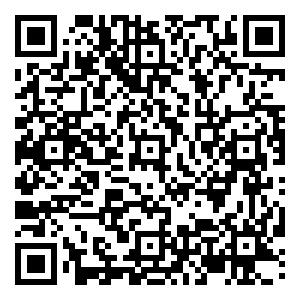APPLICATION RESEARCH OF ACCOUNTING OF FUGITIVE AREA SOURCE INTENSITY WITH CONCENTRATION REVERSE METHOD BASED ON CALPUFF MODEL
-
摘要: 针对建设项目环境影响评价领域中无组织面源源强核算的难点,提出了一个基于CALPUFF模型浓度反推无组织面源源强的方法。以多个无组织面源构成的园区为案例,选取园区排放的典型污染物SO2,核算并验证基于该方法得到的无组织面源源强。研究结果表明:该案例园区污染物排放对周围环境影响较大,符合区域污染物超标的实际情况。对于动态变化的无组织面源,采用CALPUFF模型利用浓度反推法,核算出的分级源强可定量描述无组织面源源强的变化范围;得到的平均源强更具普适性和代表性,它可量化多个无组织不定常面源对周边环境污染影响的一般情形。因此,基于CALPUFF浓度反推核算无组织面源源强是可行并且合理的。Abstract: Aiming at the difficulty of the fugitive area source intensity accounting in the field of environmental impact assessment of construction projects, a method based on the concentration of CALPUFF model to reverse the fugitive area source intensity was proposed. Taking an industrial park composed of multiple fugitive area sources as the example, the typical pollutant, SO2 emitted from the park was selected to calculate and verify the source intensity of the fugitive area sources obtained based on this method. The research results showed that the pollutant emitted from the park in this case had a great impact on the surrounding environment, and accorded with the actual situation that the regional pollutants exceed the standard. For the dynamically changing fugitive area source, the CALPUFF model with concentration reverse method was applied, and the calculated grading source intensity could quantitatively describe the variation range of the fugitive area source; the obtained average source intensity was universal and representative. It could quantify the general situation of effect of multiple fugitive unsteady area sources on the surrounding environment. Therefore, it was feasible and reasonable to calculate the fugitive area source intensity based on the CALPUFF with concentration reverse method.
-
Key words:
- CALPUFF /
- fugitive area source intensity /
- concentration reverse
-
吴丽芳, 张英剑, 游志华. 无组织大气污染源强核算探讨[J]. 江西科学, 2015,33(4):619-622. 邹兵,王国龙,赵东风.石化罐区挥发性有机物源强反演技术的研究[J].环境工程,2017,35(10):87-90. 吕兆丰,魏巍,杨干,等.某石油炼制企业VOCs排放源强反演研究[J].中国环境科学,2015,35(10):2958-2963. 伯鑫,李时蓓,吴忠祥,等.基于反演模型的焦炉无组织苯并[a]芘排放因子研究[J].中国环境科学,2016,36(5):1340-1344. 生态环境部. 环境影响评价技术导则大气环境:HJ 2.2-2018[S]. 北京:生态与环境部,2018. SCIRE J S, STRIMAITIS D G, YAMARTINO R J. A user's guide for the CALPUFF dispersion model[J]. Journal of Non-Newtonian Fluid Mechanics, 2000, 223:257-257. LEE HYUNG DON,YOO JUNG WOO, KANG MIN KYOUNG, et al. Evaluation of concentrations and source contribution of PM10 and SO2 emitted from industrial complexes in Ulsan, Korea:interfacing of the WRF-CALPUFF modeling tools[J]. Atmospheric Pollution Research,2014,5(4):664-676. 易海涛. Calpuff模式中地面气象资料对流场和浓度的影响[J]. 环境影响评价, 2016, 38(6):4-8,24. 伯鑫,吴忠祥,王刚,等.CALPUFF模式的标准化应用技术研究[J].环境科学与技术,2014,37(增刊2):530-534. 杨景朝,伯鑫,田军,等.WRF四维同化数据在空气质量法规模型CALPUFF的应用研究[J].环境工程,2018,36(7):165-169. 沈斯亮,王巧,谢海建,等.基于Calpuff模型的生活垃圾填埋场恶臭气体影响范围评估[J].东南大学学报(自然科学版),2016,46(增刊1):63-69. 祝婕,都伟新,马俊英,等.基于MM5/CALPUFF的乌鲁木齐市"煤改气"工程大气污染物浓度空间变化数值模拟[J].干旱区地理,2017,40(1):165-171. 付正旭. 基于CALPUFF模型对嘉峪关市工业高架源跨区域影响的研究[D].兰州:兰州大学,2018. 崔晨. 基于WRF/CALPUFF哈尔滨市空气质量预测研究[D].哈尔滨:哈尔滨工业大学,2015. 崔驰潇,包云轩,袁成松,等.不同边界层参数化方案对江苏地区一次平流雾过程的模拟影响[J].大气科学,2018,42(6):1344-1362. 沈晓燕,颜玉倩,肖宏斌,等.WRF模式不同参数化方案组合对青海气温、降水及风速模拟的影响[J].干旱气象,2018,36(3):423-430. 赖锡柳,王颖,杨雪玲,等.WRF模式不同陆面过程方案模拟兰州新区低空气象场特征[J].兰州大学学报(自然科学版),2017,53(3):329-340. -

 点击查看大图
点击查看大图
计量
- 文章访问数: 268
- HTML全文浏览量: 32
- PDF下载量: 6
- 被引次数: 0

 登录
登录 注册
注册 E-alert
E-alert

 登录
登录 注册
注册 E-alert
E-alert

 下载:
下载:
